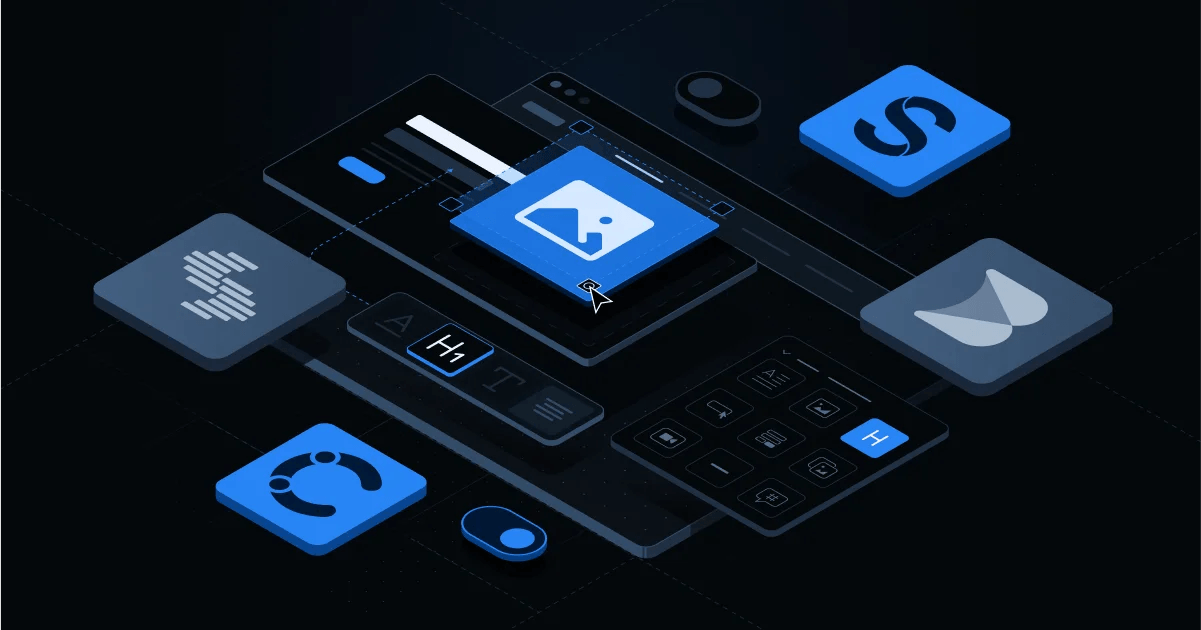Selecting the right content management system (CMS) for your B2B website is a critical decision that can impact your marketing team’s growth and efficiency. With the CMS market valued at $22 billion this year, the sheer number of options can be overwhelming. However, finding a CMS that meets your current needs and can scale alongside you is a focal point of a website strategy.
Organizations often have unique and complex content requirements. These include intricate workflows, integrations, multichannel publishing, and robust security controls. Choosing the best CMS can streamline your content management processes, enhance your website's performance, and empower your marketing team to create and publish content with ease.
In this guide, we’ll break down the key factors to consider when choosing a CMS for your B2B website, ensuring you make an informed decision.
Key Takeaways
- Selecting the right CMS is crucial for B2Bs to effectively manage content, optimize website performance, and empower marketing teams.
- B2Bs often have unique requirements that a traditional CMS may struggle to address.
- Key considerations when choosing a B2B CMS include cost, maintenance, integration with existing tools, scalability, SEO, content editor experience, multilingual support, and localization.
- The CMS should be flexible enough to adapt to your business's evolving needs and allow for customization as your company grows.

The "Headless vs Traditional CMS" Debate
The choice between a headless and traditional content management system is a significant consideration, especially for B2Bs.
Let’s run through the key differences and use cases for each approach, helping you make an informed decision that aligns with your organization's unique requirements.
Understanding Headless CMS
A headless CMS is a backend-only content management system that delivers content through an API, rather than being coupled to a specific website or application.
This decoupling of the backend and frontend allows businesses to have greater flexibility in choosing their marketing technology stack and distributing content across multiple platforms, from websites, mobile apps, and more.
Advantages of Headless CMS for B2B Websites
The adoption of headless CMS by enterprises has risen by 45% over the past two years. Headless CMSs offer several advantages for B2B organizations, including:
- Flexibility: Headless systems allow seamless integration with other marketing tools, enabling a more cohesive and efficient digital ecosystem.
- Scalability: As businesses grow and their digital needs evolve, headless CMSs can easily scale to support new channels and content requirements.
- Future-Proofing: Separating content from presentation, headless CMSs can future-proof your digital presence, making it easier to adapt to emerging technologies and changing customer preferences.
Use Cases for Traditional CMS in B2B
While headless CMSs offer significant benefits, traditional monolithic CMSs still have their place, especially for smaller businesses or those with less complex digital presences.
Traditional CMSs provide an easy-to-use interface that allows marketing teams to quickly create and publish new content without needing technical expertise.
Best B2B CMS Platforms for Early Stage Companies and Small Websites
When it comes to choosing the best CMS for your B2B website, early-stage companies and small businesses have unique needs and considerations. Two leading platforms that stand out in this category are Webflow and HubSpot CMS.
Webflow: The No-Code CMS Solution
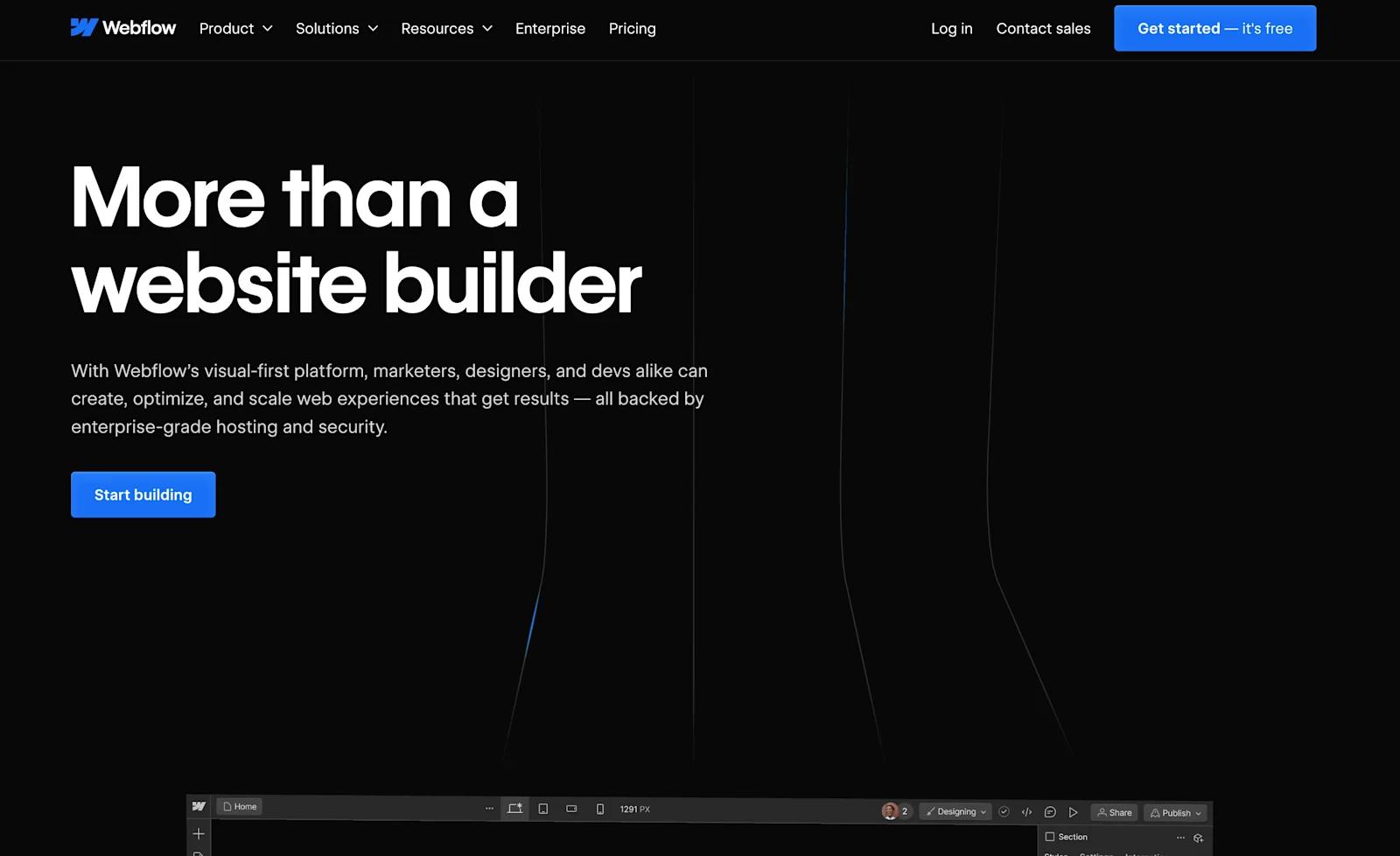
webflow website
Webflow is a popular no-code CMS that is well-suited for early-stage B2B companies and small websites.
Webflow's web-based interface makes it easy for non-technical users to build, edit, and update websites without coding. It includes features that make content editing and site management extremely simple for non-technical users.
Webflow offers relatively fair costs, but they have recently raised their prices as they try to serve a more corporate customer base. Still, it is an attractive option for new businesses and small websites that operate on a tight budget.
HubSpot CMS: An All-in-One Solution
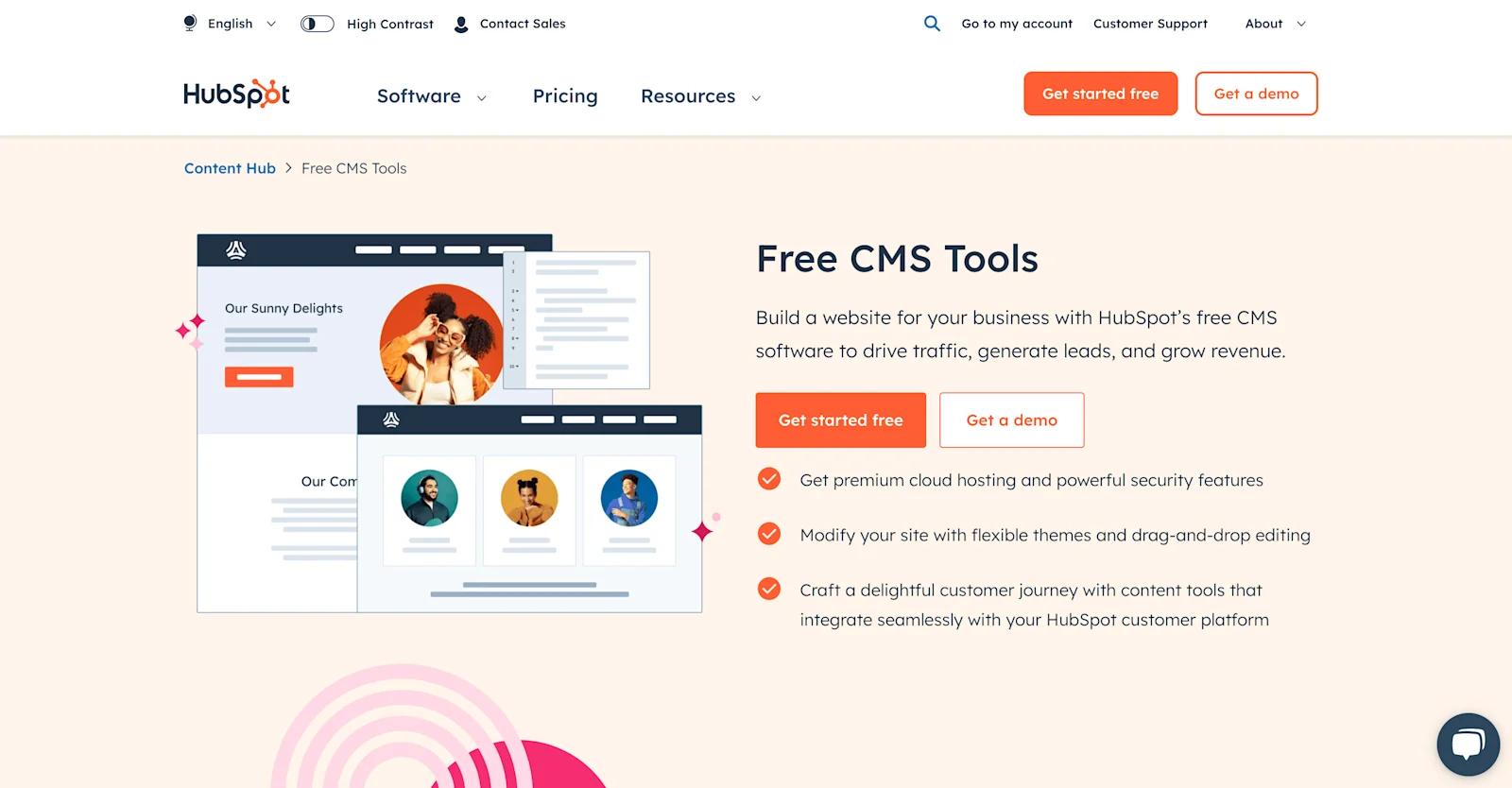
hubspot cms
HubSpot CMS (Content Hub) is another strong option for SMBs, especially those already using HubSpot's marketing, sales, and service hubs.
The HubSpot CMS provides an intuitive, no-code interface for managing website content, while also integrating seamlessly with HubSpot's other business growth tools. This can be a convenient all-in-one solution for small to medium-sized B2B organizations looking to streamline their marketing tech stack and publish their content more effectively.
Both Webflow and HubSpot CMS offer features that make them compelling CMS platforms for early-stage B2B companies and small websites, compared to other options on the market.
Their user-friendly interfaces, content management capabilities, and integration flexibility make them well-suited to support the needs of new businesses and small websites that are looking to establish a strong online presence and drive business growth.
Best B2B CMS for Enterprises and High Growth Websites
As your B2B company grows, your digital needs become more complex. For larger enterprises or rapidly expanding businesses, headless contentful platforms offer powerful enterprise content management capabilities that can scale with your organization.
These platforms allow you to build custom digital experiences while allowing non-technical users to manage your content.
Contentful
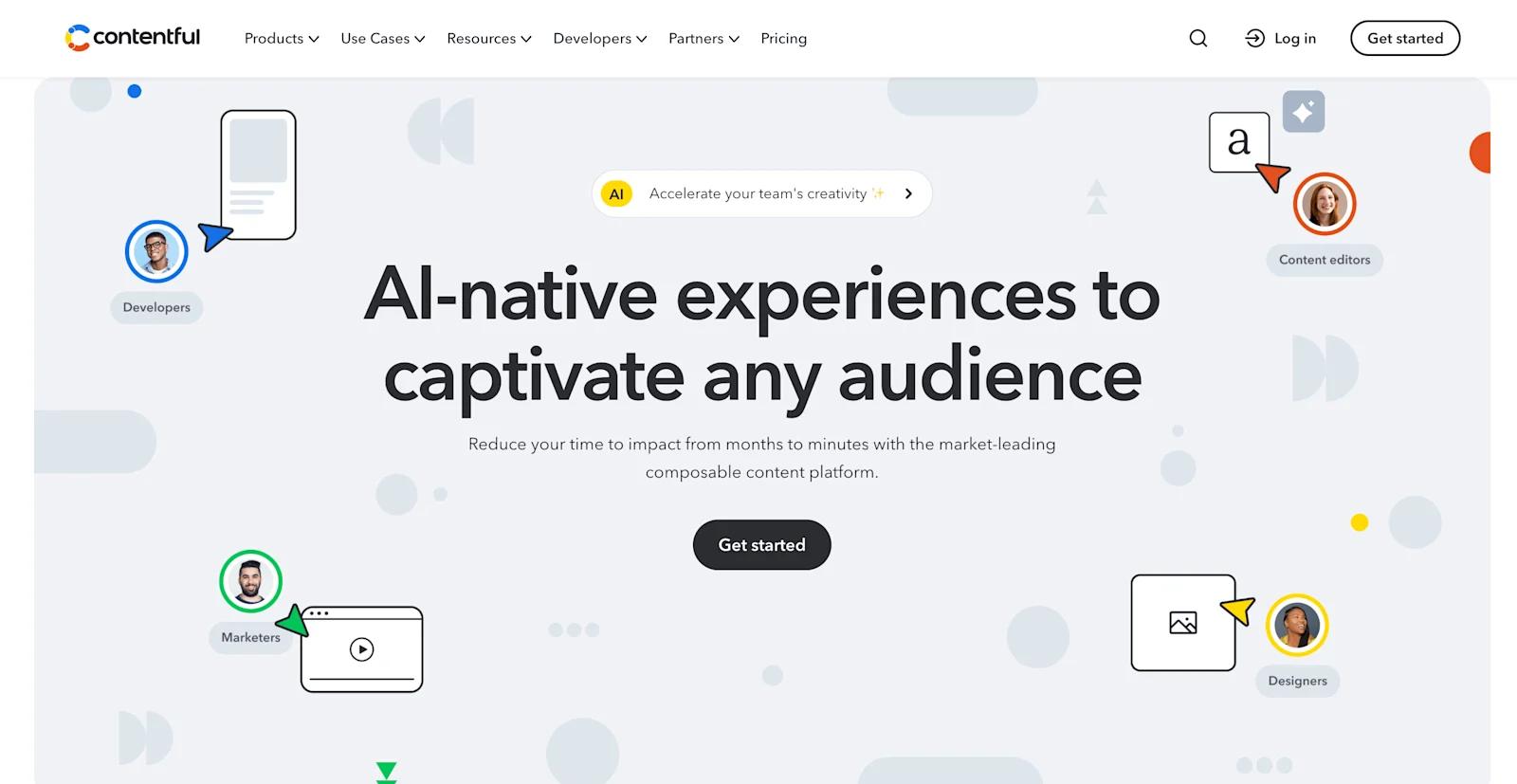
contentful website
Contentful is a flexible, API-first CMS that gives developers the freedom to build unique digital experiences. Its headless architecture makes it easy to integrate with other systems in your tech stack and scale your website as your business grows.
Contentful's intuitive content editing experience also allows your team to quickly update and publish content without technical expertise.
DatoCMS
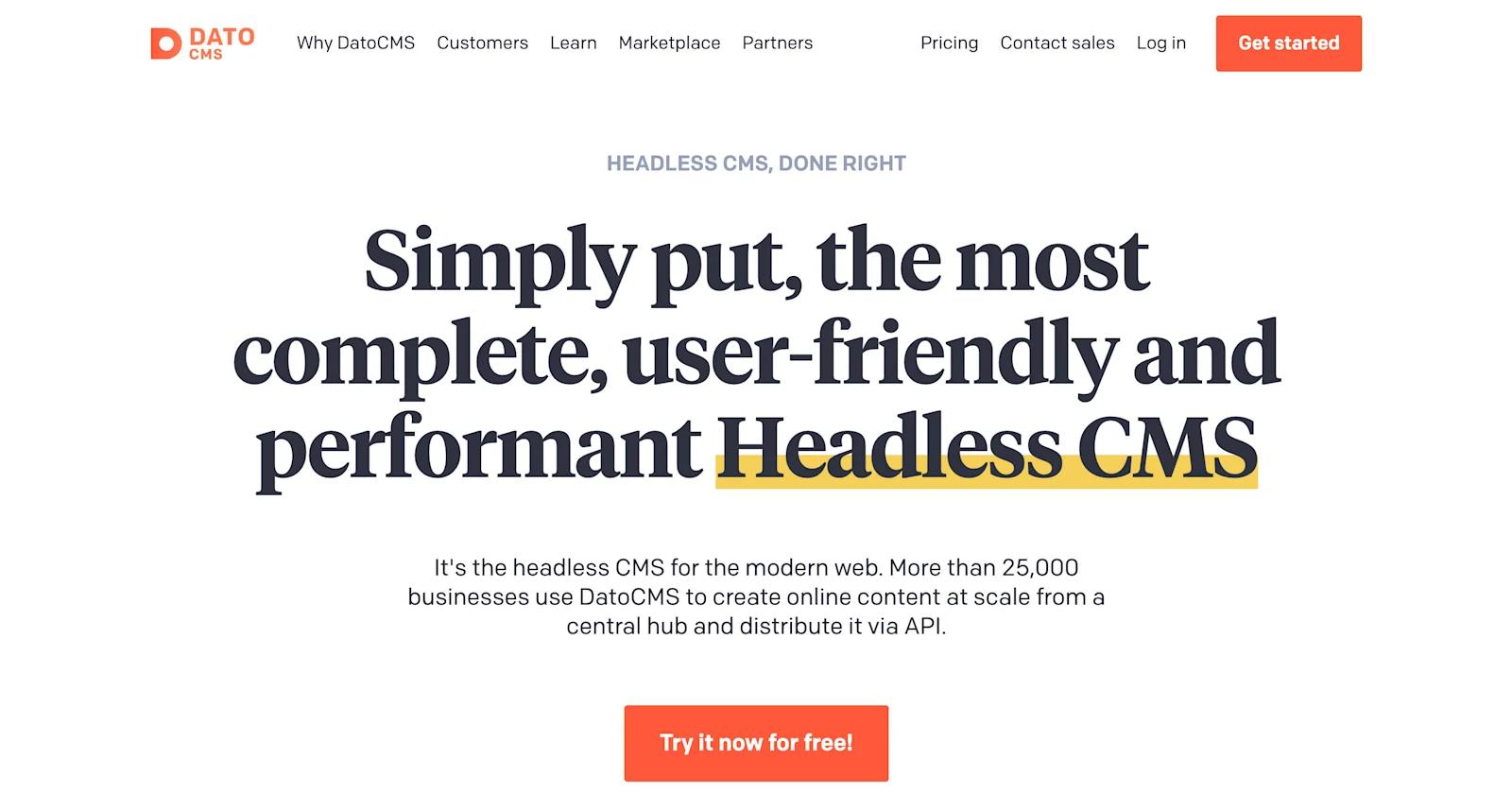
datocms website
DatoCMS is another marketer-favorite headless CMS, well-suited for enterprise-level B2Bs and high growth orgs.
Like Contentful, DatoCMS provides a backend content management system that can be easily integrated with any frontend technology, allowing for a highly customized and scalable digital experience.
DatoCMS also offers features like multilingual support, content previewing, and API capabilities that can benefit complex B2B websites.
Sanity
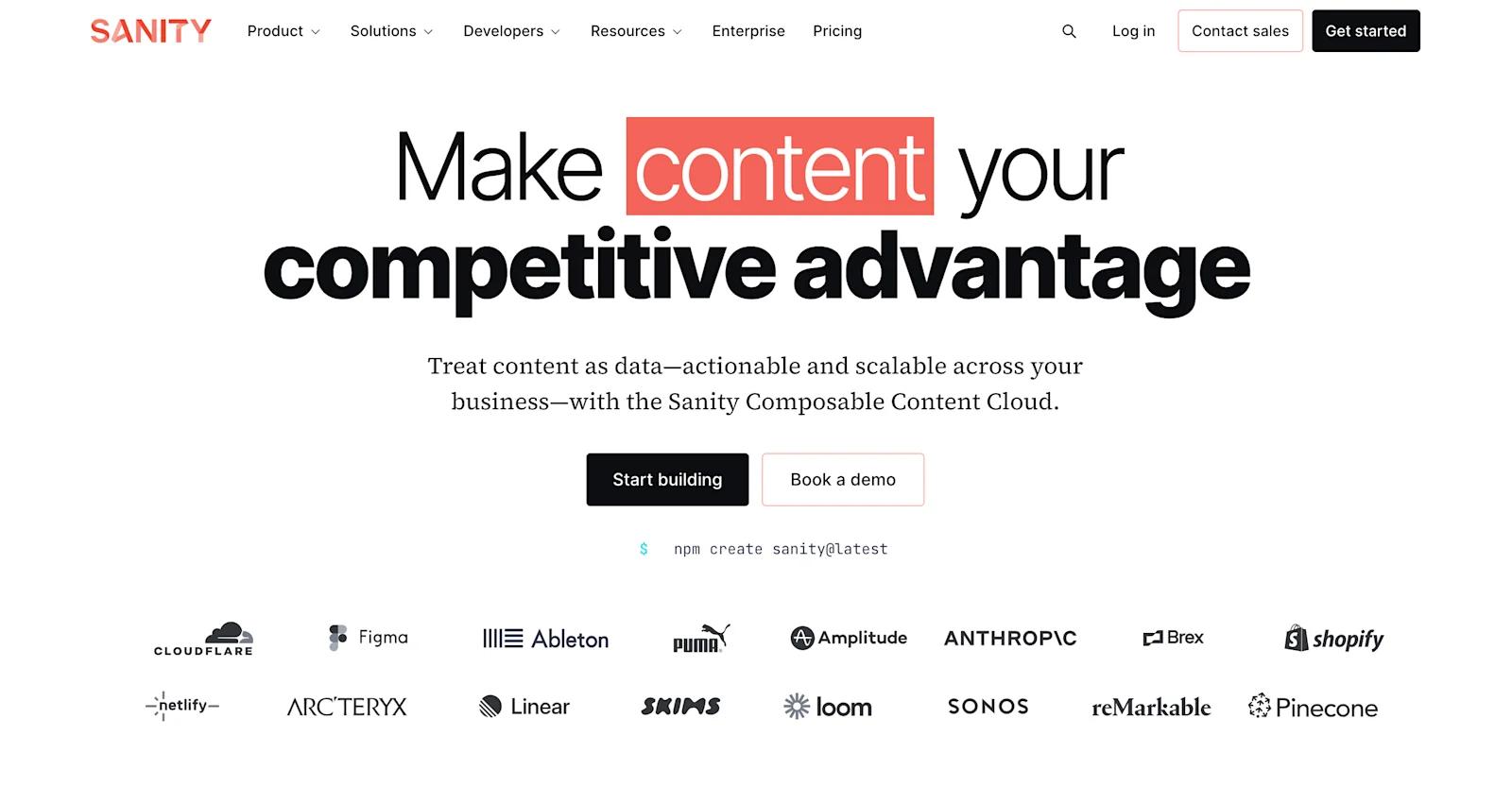
sanity website
Sanity is a headless CMS that takes a unique, developer-friendly approach to content management.
It uses a flexible, schema-driven data model that allows for highly customized content structures, making it a powerful choice for large, sophisticated B2B websites. Sanity also integrates well with a variety of frontend frameworks and technologies, giving brands the flexibility to build tailored digital experiences.
Best B2B Visual Headless CMS
For businesses that prioritize visual content and require a seamless editing experience, you may want to consider a drag-and-drop platform.
Visual editing CMS platforms provide intuitive, user-friendly interfaces that allow non-technical users to create and manage content without relying on developers.
These platforms offer strong tools for designing and editing, enabling your team to build visually engaging digital experiences that captivate your audience and support your growth.
Builder
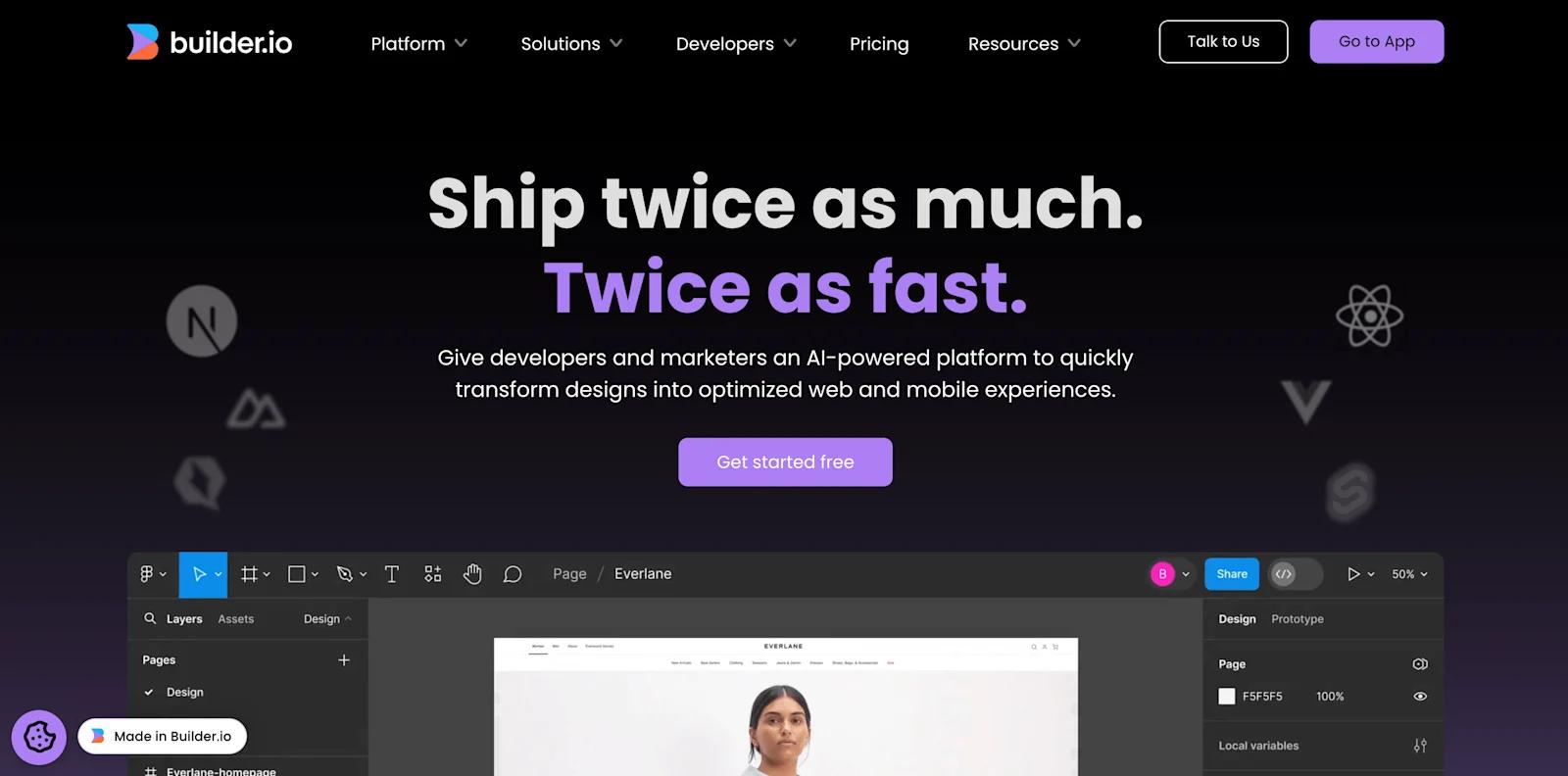
builder website
For B2B companies that prioritize a visually-driven content editing experience, Builder is an excellent CMS option.
Builder provides an intuitive, drag-and-drop interface that allows marketers to easily customize page layouts, add multimedia elements, and preview changes in real time - without needing to code.
This can be especially useful for B2B and B2C companies looking to create engaging, visually appealing digital experiences for their customers.
Storyblok
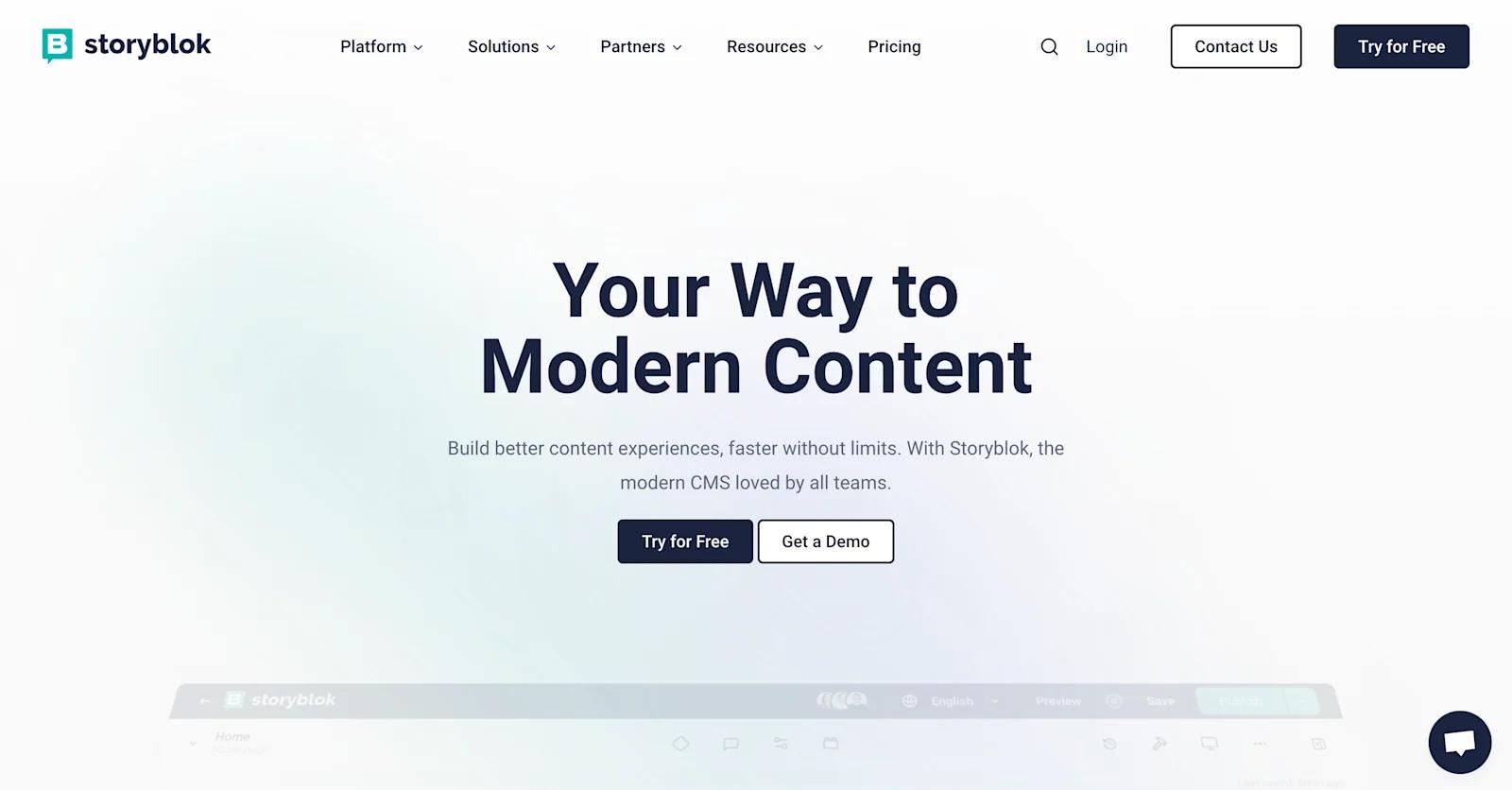
storyblok website
Storyblok is another visual, component-based CMS that empowers non-technical users to build and edit websites. Storyblok's modular approach makes it easy for B2B marketers to assemble pages using pre-built components, with a WYSIWYG (what-you-see-is-what-you-get) editor for real-time visualization.
This can streamline the content creation and optimization process, allowing marketers to quickly test and iterate on the customer experience.
Key Features to Look for in a B2B CMS
When selecting a CMS for your B2B company, it's important to prioritize features that cater to your business’s specific needs.
These are the key capabilities to consider:
1. Integration Flexibility
A critical feature for B2B companies is the ability to integrate the CMS with the rest of their marketing and business tech stack.
Look for a CMS that offers API capabilities and a wide range of pre-built integrations, allowing you to connect your website content with CRMs, marketing automation tools, e-commerce platforms, and other systems your business relies on.
This seamless integration will streamline your workflows and enhance your customer relationship management.
2. Content Editing Experience
The content editing experience should be intuitive and accessible for your marketing team, even if they lack technical expertise.
Evaluate how easy it is to update website content, create new pages, and manage media assets without needing to code or rely on developers. A user-friendly CMS can mean that your team can make timely updates and adjustments, ensuring your digital presence stays fresh and relevant.
3. Scalability
As your B2B business grows, your website needs to be able to scale and evolve alongside it. Look for a CMS that can accommodate increasing content volumes, traffic spikes, new integrations, and other requirements that may arise as your digital presence expands.
This scalability will ensure your CMS solution can keep pace with your business's changing needs and support your long-term growth objectives.
4. SEO Capabilities
Strong search engine optimization (SEO) features are crucial for driving qualified traffic to your B2B website as 68% of online experiences begin with a search engine.
Evaluate the CMS's built-in SEO tools, the ability to optimize meta tags and content, and integrations with SEO plugins and analytics platforms. A CMS with strong SEO functionality will help your company climb the search engine rankings and reach your target audience more effectively.
5. Personalization and Localization Options
If your B2B company operates in multiple markets or serves diverse customer segments, look for a CMS that supports features like personalization, multilingual content management, and localization.
These capabilities can help you deliver a more relevant, tailored digital experience to your various audiences, strengthening your engagement and conversions.
Carefully considering these key features means you can choose a CMS that aligns with your B2B company's requirements and allows your marketing team to create a seamless, scalable, and personalized digital experience for your customers.
Implementation and Migration Tips
Content Migration Plan
Replatforming to a new content management system can be a complex process, but with careful planning and execution, you can ensure a seamless migration.
The key is to approach the migration strategically, prioritizing minimal disruption to your website and supporting your team to succeed in the new CMS environment.
🗺 Planning Your CMS Migration
Begin by conducting a thorough audit of your existing website and content. Understand the current structure, functionality, and any unique requirements. This assessment will help you map out the migration process and establish a timeline that aligns with your business objectives.
Collaborate closely with your CMS provider and development team to develop a comprehensive change management plan. This will ensure a smooth transition, minimizing any potential website downtime or disruptions to your online presence.
🧑🏫️ Training Your Team
Once you've selected a new CMS, it's crucial to provide comprehensive training for your marketing and content teams. Educate them on how to use the CMS's features and functionality, enabling them to maintain and update your website effectively.
Invest in thorough CMS training sessions, covering topics such as content creation, optimization, and publication workflows. This will enable your team to work confidently within the new system and empower them to contribute to the ongoing CMS maintenance and continuous improvement of your website.
⏰️ Ensuring Minimal Downtime
During the CMS migration process, it's essential to minimize any website downtime or disruptions to your online presence. Work closely with your CMS provider and development team to plan the migration in a way that avoids major service interruptions for your customers and prospects.
Develop a detailed migration plan that includes comprehensive testing, phased rollouts, and comprehensive backup and recovery strategies. This will help you minimize downtime and avoid disruptions to your website's availability and functionality.
🗒 Post-Migration Best Practices
Even after the initial CMS migration, ongoing maintenance and optimization of your new CMS will be necessary. Establish best practices for regularly updating content, plugins, and security measures, as well as continuously evaluating and improving your website's performance and user experience.
Implement a thorough CMS maintenance plan that includes regular content updates, feature enhancements, and technical updates. This will ensure your website remains up-to-date, secure, and optimized for your target audience, contributing to the long-term success of your CMS migration and ongoing website strategy.
Questions to Ask When Evaluating a CMS for B2B
When evaluating a CMS, consider the following key questions to ensure it can future-proof your digital experiences.
Can the CMS scale and evolve with our business needs?
Assess the CMS's ability to handle increasing content volumes, traffic spikes, new integrations, and other evolving requirements as your company expands. Look for a platform that can scale seamlessly to support your long-term growth plans.
Do we want to deliver an omnichannel experience?
If providing a consistent, integrated experience across multiple channels and devices is a priority, ensure the CMS has the necessary APIs, content delivery capabilities, and third-party integrations to enable your omnichannel marketing and sales strategies.
Can this CMS integrate with the rest of our website and business tech stack?
Evaluate the CMS's integration flexibility and the availability of pre-built connectors to your other marketing, sales, and business software. This will allow your website content to flow smoothly between systems and maximize the value of your overall technology investment.
How important are features like SEO, localization, and personalization?
Depending on your B2B company's specific needs and target markets, advanced SEO tools, multilingual content management, and personalization capabilities may be critical. Assess how well the CMS supports these functions and aligns with your broader digital experience and customer engagement strategies.
What kind of content editing experience does our team require?
Evaluate the CMS's content management interface and workflows to ensure they meet the needs of your marketing and content teams. Consider factors like the ease of making updates, the availability of visual/drag-and-drop editing tools, and the level of technical expertise required to use the system effectively.
What are the initial setup and ongoing costs?
In addition to the initial setup and migration expenses, be sure to understand the CMS's ongoing maintenance, hosting, and licensing fees. Also, assess whether the system's features and capabilities justify the investment for your B2B company's specific needs and growth plans.

Conclusion
Selecting the right content management system for your B2B website is a critical decision that can significantly impact your digital presence, marketing efficiency, and overall business growth.
Carefully evaluating factors like integration flexibility, content editing experience, scalability, SEO capabilities, and costs can help you choose a B2B CMS platform that aligns with your needs and allows your marketing team to succeed.

